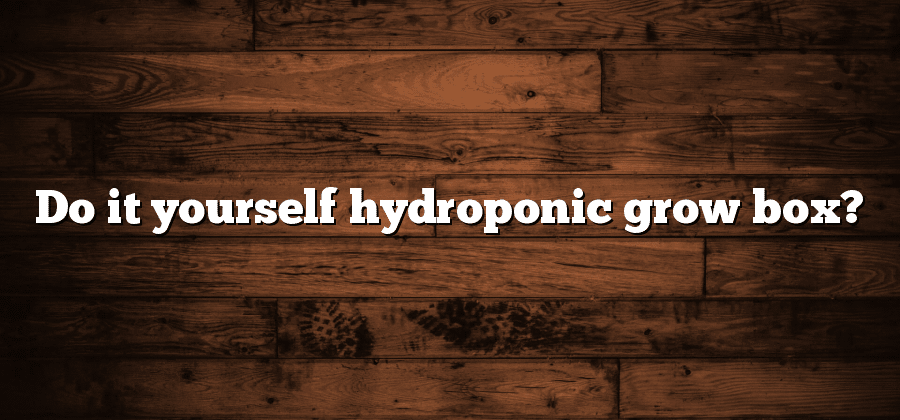Understanding Hydroponics and Its Benefits
Hydroponics, a method of growing plants without soil, has gained significant attention in recent years due to its numerous benefits. Unlike traditional gardening, hydroponics relies on a nutrient-rich water solution that nourishes the plants directly, resulting in faster growth rates and higher yields. This innovative cultivation practice allows for precise control over environmental factors such as temperature, pH levels, and lighting, providing optimal conditions for plant growth even in limited spaces.
One of the major advantages of hydroponics is its ability to conserve water. Compared to traditional soil-based gardening, hydroponic systems use up to 90% less water. This is because the water in a hydroponic setup is reused, eliminating the need for excessive irrigation and reducing water waste. Additionally, hydroponics promotes resource efficiency by minimizing the use of synthetic fertilizers and pesticides, improving the overall sustainability of food production. These advantages, combined with the ability to grow crops year-round regardless of outdoor weather conditions, make hydroponics a compelling alternative for both home gardeners and commercial growers.
Essential Materials for Your DIY Grow Box
To build a successful DIY grow box for hydroponics, it is essential to have the right materials at your disposal. These materials not only ensure the stability and functionality of your grow box but also contribute to the overall health and productivity of your plants. Here are a few key materials that you will need to get started.
First and foremost, a sturdy and well-insulated container is vital for a DIY grow box. You can choose from a variety of options such as plastic storage containers, wooden cabinets, or even repurposed furniture like old wardrobes or bookshelves. Make sure that the container is large enough to accommodate your desired number of plants and has proper sealing to maintain optimal growing conditions. Additionally, consider installing ventilation systems or fans to regulate temperature and airflow within the grow box.
Next, lighting plays a crucial role in plant growth. To provide your plants with the necessary light, invest in good quality grow lights. LED lights are highly recommended for their energy efficiency and varying colored spectrums that cater specifically to different stages of plant development. It is important to position the lights properly to ensure even distribution and proper coverage for all plants. Keep in mind that plants require different light intensities at different stages, so adjustable or dimmable lights can be beneficial.
Designing the Perfect Environment for Plant Growth
Creating the perfect environment for plant growth is crucial when it comes to hydroponics. This method of growing plants without soil relies on providing the right conditions to maximize growth and yield. Lighting is one of the key factors in designing the ideal environment. An adequate light source ensures that plants receive the necessary amount of energy for photosynthesis. LED lights are a popular choice among hydroponic growers because they are energy-efficient, produce less heat, and can be customized to emit specific wavelengths that promote optimal plant growth.
In addition to lighting, temperature and humidity levels are essential elements to consider when designing the perfect environment for plant growth. Most plants thrive within a temperature range of 65-75°F (18-24°C). It is crucial to maintain a stable temperature to avoid stressing the plants or hindering their growth. Humidity levels also play a critical role in plant health. The ideal range for most plants falls between 50-70% humidity. Keeping a close eye on the temperature and humidity in your hydroponic system will ensure that your plants flourish and reach their full potential.
Step-by-Step Assembly Guide for Your Grow Box
Before beginning the assembly process for your DIY grow box, gather all the necessary materials and tools. This will include the grow box components, such as the frame, panels, and shelving, as well as any additional equipment like lighting fixtures, timers, and ventilation systems. Ensure that you have read through the instruction manual or guide provided with your grow box to familiarize yourself with the steps involved in assembling it.
Start by assembling the frame of the grow box according to the manufacturer’s instructions. Use the provided screws or fasteners to securely attach the frame pieces together. Once the frame is sturdy and stable, attach the panels or walls to enclose the box. Pay close attention to any pre-drilled holes or marks on the panels to ensure proper alignment. As you progress through the assembly, follow each step carefully and double-check your work to ensure everything is correctly installed.
Selecting the Right Hydroponic System for Your Box
When it comes to selecting the right hydroponic system for your grow box, there are various factors you need to consider. Each system has its own advantages and disadvantages, so it is important to understand your specific needs and preferences before making a decision.
One of the first considerations when choosing a hydroponic system is the type of plants you wish to grow. Different plants require different levels of nutrients, water, and oxygen, so it is essential to choose a system that can provide these elements in the right proportions. Additionally, you should consider the space available in your grow box and how the system will fit in. Some systems, such as NFT (Nutrient Film Technique) or DWC (Deep Water Culture), may require more vertical space, while others, like Ebb and Flow or Drip systems, may be more suitable for compact spaces. By evaluating your plant species and available space, you can narrow down your options and make an informed decision.






